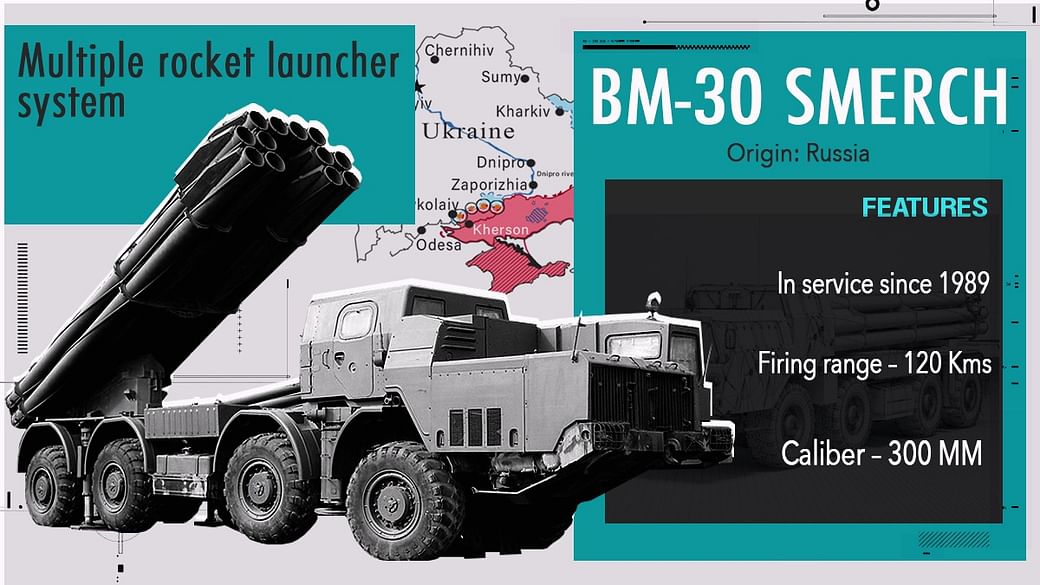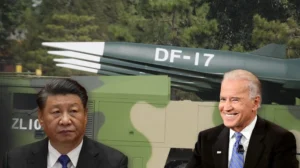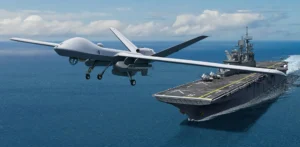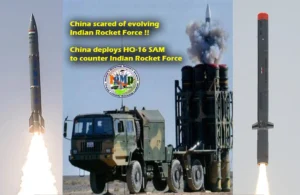New Delhi: The year was 1943. Blows from 3,000 gun barrels per mile, packed along a 25-mile front, fell together on the darkness-cloaked frontlines around Orel between the Oka and Orlik rivers in Ukraine. The savage bombardment, which marked the beginning of the Soviet Union’s counter-offensive at Kursk in the summer, exceeded the shelling in the great battles of El Alamein and Verdun by a factor of five and ten.
Major-General Peter Petrovich Sabennikoff watched the effects of the artillery with pleasure: “The Germans dance when she sings.”
Faced with endless bombardment, historian A. V. Griniev noted, some German soldiers “literally went mad.” “Alas,” lamented General Gotthard Heinrici, considered among the most brilliant of German defensive tacticians, “the Russian artillery is very good. It is very accurate and, unfortunately, very mobile.”
Learning from such historic triumphs,Russian President Vladimir Putin’s military put their faith in missile troops and artillery to bludgeon their way past Ukraine’s defences.
The war began with giant barrages of artillery fire — howitzers, rockets, and missiles — aimed at levelling Ukrainian forward positions and decapitating their command centres, before Russian tanks and troops moved in. Estimates suggest that 1,100 missiles hit Ukraine in the first 10 days of the war alone.
 |
| Graphic: Soham Sen | ThePrint |
Earlier this month, Russia was estimated to still be firing 20,000 artillery rounds per day compared to Ukraine’s 4,000 to 7,000 rounds, journalist Courtney Kube has noted, a rate not seen since the Korean War that lasted from 1950 to 1953.
The god who failed
The Russian bombardments, though, failed to punch a hole in the Ukrainian defences. The massive and unrelenting barrage of tactical missiles — the 21st-century version of artillery — failed to break the morale and will of Ukrainian soldiers. Even when hits were scored on command and control centres or logistics facilities, these were rapidly brought online again.
In contrast, the North Atlantic Treaty Organization’s (NATO) standard 155 mm and 105 mm weapons systems — especially the M142 High-Mobility Artillery Rocket System, or HIMARS, which fires GPS-guided projectiles out to 50 miles — have devastated Russian ammunition dumps, command posts, and key bridges. The new war machine has allowed Ukraine to do so without suffering the effects of counter-battery fire: Not a single HIMARS is believed to have been hit.
Former Soviet dictator Joseph Stalin is reputed to have called artillery the “god of war.” In Ukraine, an old god failed, and a new one was born — long-range, precision-guided artillery which cuts through armies like a surgeon’s scalpel, instead of hammering them into submission.
Worse, NATO has supplied air defence systems to Ukraine that can take down incoming Russian missiles. Moscow’s weapon of choice is increasingly ineffective. In early October, Ukraine received an advanced IRIS-T system from Germany with three more to be delivered by next year. Ukrainians say the first one deployed has so far shot down every projectile in its path.
And earlier this month, Ukraine defence minister Oleksii Reznikov confirmed the delivery of two NASAMS (National Advanced Surface-to-Air Missile System), developed by Norwegian aerospace company Kongsberg in collaboration with American defence giant Raytheon. The US will be delivering a total of seven such systems. Italy has also delivered the Aspide 2000 medium range surface-to-air missile system. With the Russian air force largely missing in action — for reasons ThePrint analysed in the first part of this series — these systems are largely being used in a counter-missile role.
For a time, Russian tactics seemed to be working. Illia Ponomarenko, a journalist with The Kyiv Independent, wrote in August: “Russian heavy artillery— the Kremlin’s deadliest weapon against Ukraine — is still a superior force that has no mercy.”
The reverses that Russia has suffered, however, are teaching military thinkers an important lesson: Though artillery is still a critical element of warfare, massed guns cannot compete with weapons that have superior ranges and are powered by modern precision-guidance technologies. The victims of the Ukraine war include some dearly-held shibboleths.
The dilemmas of Russian modernisation
Five years ago, scholars Lester Grau and Charles Bartles conducted a study of the Russian military doctrine for the US military. The study was conducted in the shadow of the 2014 annexation of Crimea by Russian covert forces. Even though elite special forces would continue to play a key role in such operations, Grau and Bartles explained, the Russian military was also rethinking how it would fight conventional wars against NATO forces.
For one, Russia began investing heavily in precision-guided missile systems. The Russians believed that NATO would enjoy air superiority in any future war, and so designed the highly-accurate 9K720 Iskander missile to compensate. The Iskander was built to evade sophisticated anti-missile defences, and to deliver its payload with accuracy even if GPS signals were jammed.
Russia also developed the Kh-47M2 Kinzhal hypersonic missile to penetrate Western missile defences, and has now used it in limited numbers in Ukraine.
Moscow also invested heavily in more advanced artillery such as the 2S35 Koalitsiya 155 mm self-propelled howitzer, which can fire 16 rounds a minute — the equivalent of an entire battery of older guns. The 9A53 Uragan M1 tube artillery system was also developed into a new family of systems, allowing for more rapid firing.
Like many other militaries, Russia also invested in developing unmanned aerial vehicles (UAVs), such as a target-acquisition drone tethered to its modern T14 Armata tanks. Each highly mobile brigade was to have a UAV company, equipped with drones like Granat, Orlan and Eleron.
There was special emphasis on designing UAVs for artillery target-spotting, with ranges of around 40 km. The Russian military also invested in state-of-the-art technologies such as the Kurganets robotic weapons family, using a tracked chassis that can be controlled with a PlayStation-like device.
For Russian military planners, there was a critical dilemma: In any future war, NATO would likely enjoy superiority in electronic warfare, rendering high-tech systems vulnerable. Although accuracy and range were important, the argument went that they didn’t displace the need for massed fire.
The more sophisticated the systems, the more vulnerable they became to Western electronic countermeasures like jamming. Effective fire, thus, involved delivering a mathematically-calculated number of dumb rounds, which could ensure a 70-90 per cent probability that the target was destroyed.
According to the Military Balance — a database of global weapons compiled by the International Institute for Strategic Studies — Russia had more than 4,894 artillery pieces in 2022, nearly half of which were self-propelled.
“Whereas Western militaries increasingly use artillery to launch precision strikes against enemy positions, the Russian army still values large-scale area bombardments with overwhelming volumes of firepower, especially from deadly multiple rocket-launcher systems such as the BM-30 Smerch,” a US military assessment notes.
 |
| Graphic: Soham Sen | ThePrint |
Likely, economic constraints reinforced the case for numbers over quality. For the most part, the Russian military focussed on upgrading existing technologies, mindful of the costs of inducting revolutionary new systems. Even to some Western thinkers, this reasoning appeared sound. In a 2014 study for the RAND corporation, senior policy researcher John Gordon and others warned of the risks that NATO might be outgunned by numerically superior — even if technologically less than exquisite — artillery.
India’s difficult choices
Like Russia, India has been working to modernise its artillery for many years. In 1999, India finalised the Field Artillery Rationalisation Programme (FARP), the template for its artillery response in future wars, especially in the mountains.
Under FARP, the Army is supposed to have, by 2025-27, a mix of around 3,000-3,600 155mm but different calibre types of towed, mounted, self-propelled (tracked and wheeled) howitzers. All of this was supposed to be achieved through a mix of direct imports, licensed manufacturing, and indigenous systems.
Estimates made within the armed forces, though, suggest that it is only by 2040 that the Army will be able to reach near its target that was set in 1999.
Of all the programmes that are being pursued, only two have been successful — one that was a direct import from the US and the other a joint manufacturing project by private defence player L&T and a South Korean firm.
The direct import was of the M777s, 145 of which were procured especially to be deployed against China. As of now, seven regiments — 18 guns in each — of the Ultra Lightweight Howitzer have been inducted and deployed along the Line of Actual Control (LAC).
The other successful project has been the K9 Vajra Tracked Self-Propelled Howitzer. The Army is now in the process of ordering 200 of these howitzers for deployment in the mountains, though they were originally meant for the deserts.
The indigenous Advanced Towed Artillery Gun System (ATAGS) is still a work in progress and its induction will take at least three-four years at a minimum — and that’s if current deadlines are met, military sources say. As the name suggests, these are guns that can be towed away by vehicles.
The Army has also managed to modernise three regiments of Sharang, upgrading the Russian 130mm M46 guns to 155mm/45 calibre. In total, 300 of these are to be upgraded, sources said.
The indigenous Dhanush artillery gun, known as the desi Bofors, has finally cleared all hiccups. While one regiment of it has been deployed, the second one is to be raised next year.
Another success story is the 75km-range guided Pinaka multi-barrel rocket launcher. It will add on to the Russian ‘Smerch’ that has a range of about 90 km. The Defence Research and Development Organisation (DRDO) is working on a longer-range Pinaka with an increased range of about 125 km. While the Army currently has four regiments of the Pinaka systems that fire guided rockets, six more have been ordered for.
Lieutenant-General P. R. Shankar (retired), former Director General of the Corps of Artillery, wrote for ThePrint in September that the size of the People’s Liberation Army (PLA) arsenal, and the ranges it has available, would make it hard for India to match China weapon-for-weapon. Terrain imposes inexorable restraints of mobility on the Indian side of the LAC, making the deployment of heavy weapons complex.
This would suggest that missiles might play an important role in India’s future arsenal — but the challenges in developing them aren’t small. An assessment by the US military concluded that the Chinese air force has the world’s largest ground-based missile force with over 2,200 conventionally armed ballistic and cruise missiles. This stock, the assessment said, means enough anti-ship missiles to attack every US surface combatant vessel in the South China Sea with enough firepower to overcome each ship’s missile defence.
India’s Russian-made S400s give it missile defence capabilities, together with the Israeli-made Spyder. Indigenous systems are also being developed.
The Prithvi Air Defence (PAD) anti-ballistic missile, for example, is reported to be able to target both aircraft and incoming missiles at altitudes of up to 50 km. The more advanced Advanced Air Defence is reported to have interception ranges of up to 200 km. Experts like physicist Theodore Postel have, however, expressed scepticism about the real-word success rates of missile-interception systems.
In September last year, then Chief of Defence Staff General Bipin Rawat had said that India was looking to create a rocket force that could control and maintain the country’s missiles. However, following his death in a helicopter crash, the idea seems to have disappeared from military discussion.
India has only one medium-range conventional missile — the BrahMos — and in limited quantities. Altogether, the three armed services will have about 1,000 of these missiles that are developed in collaboration with the Russians. As the war in Ukraine has shown, these numbers are small. It is unclear how long they would last in the event of a war with China.
Russia’s industrial base has struggled to replenish its arsenal in the midst of the war. Vadym Skibitskyi, the deputy head of the Chief Intelligence Directorate of the Ministry of Defence of Ukraine, has said that Russia is buying the ballistic missiles Fateh-110 and Zolfagar from Iran. Speaking earlier this month, Skibitskyi estimated that Russia was left with just 120 Iskanders. Around 40 Kinzhals were estimated to be left in its arsenal.
Adding to India’s concerns, China isn’t the only threat as Pakistan, too, is looking at upping its firepower India using Chinese systems. Islamabad is acquiring the Chinese-made vehicle-mounted SH-15 howitzers to counter the Indian K-9 Vajra howitzers. The SH-15 system, which can also fire projectiles with sub-kiloton yield nuclear warheads, uses a 6×6 wheeled Shaanxi truck chassis for carrying a 155mm howitzer mounted at the rear of the truck.
While Vajra is a tracked self-propelled howitzer, the SH-15 is a mounted gun system. The Indian Army is looking at acquiring mounted gun systems, a weapon that has already been acquired from India by Armenia.
China’s Northern Industries Corporation (NORINCO) is also supplying the AR-1 300 mm multi-barrel rocket launchers to Pakistan. It is being speculated that Beijing is also looking at the possibility of supplying the nearly 2,000km-range operational DF-17 hypersonic missile to offset New Delhi’s edge over Islamabad. China is also extending cooperation to Pakistan to upgrade various types of ammunition, including extended-range artillery shells and guided ones.
To find answers to these dilemmas, Indian planners will have to think carefully of how best to utilise their resources — and to conceive new means of warfighting that play to their advantages.









